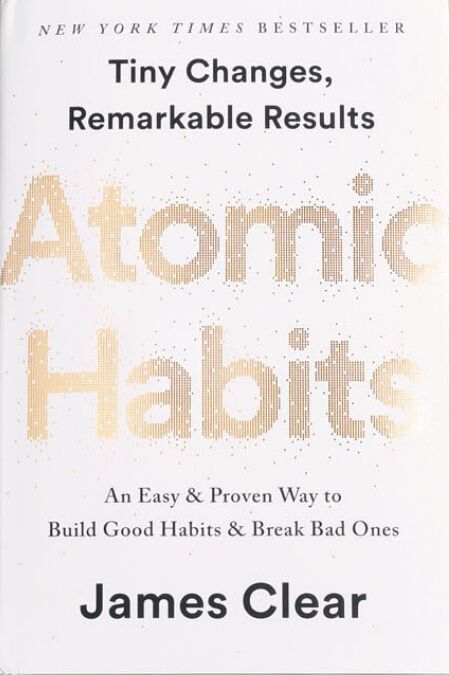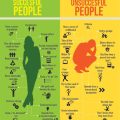Detailed Summary of “Atomic Habits” by James Clear
“Atomic Habits” by James Clear is a practical guide that explores the science of habits and how small changes can lead to remarkable results. Clear draws on various studies in biology, psychology, and neuroscience to understand how habits form and how they can be changed. He introduces a four-step model of habits and outlines strategies to build good habits and break bad ones.
The Habit Loop
Clear describes the habit loop as comprising four stages: cue, craving, response, and reward. Understanding this loop is crucial for modifying or establishing habits:
- Cue: This is the trigger that initiates the behavior. It could be a specific time of day, a location, an emotional state, or other cues in your environment.
- Craving: The motivational force behind every habit. It represents the desire for the change in state that the habit brings.
- Response: The actual behavior or habit you perform. This is what you do in reaction to the cue and craving.
- Reward: The end goal of every habit. The reward satisfies your craving and reinforces the habit loop.
The Four Laws of Behavior Change
Clear introduces the four laws of behavior change to help create good habits and break bad ones:
- Make It Obvious:
- Identify your cues and make them visible. For example, if you want to drink more water, place water bottles in locations where you spend most of your time.
- Use “implementation intentions” to specify the when and where of your habits. E.g., “I will exercise at 7 AM in my living room.”
- Make It Attractive:
- Pair habits with activities you enjoy. This is known as “temptation bundling.” For example, listen to your favorite podcast while exercising.
- Reframe your mindset to highlight the benefits of the habit.
- Make It Easy:
- Reduce friction by decreasing the number of steps between you and your good habits. For example, lay out your workout clothes the night before.
- Use the “Two-Minute Rule,” which states that when you start a new habit, it should take less than two minutes to do. This makes it easier to get started and reduces resistance.
- Make It Satisfying:
- Use immediate rewards to reinforce good habits. For example, after completing a workout, treat yourself to a healthy smoothie.
- Track your habits to provide visual proof of your progress and to keep yourself accountable.
Breaking Bad Habits
To break bad habits, Clear suggests inverting the four laws of behavior change:
- Make It Invisible:
- Remove cues that trigger bad habits from your environment. For example, if you’re trying to reduce screen time, keep your phone out of your bedroom.
- Make It Unattractive:
- Reframe your mindset to see the negative aspects of the bad habit. For instance, focus on the negative health effects of smoking.
- Make It Difficult:
- Increase the friction required to perform the bad habit. For example, if you want to cut down on junk food, store it in a hard-to-reach place.
- Make It Unsatisfying:
- Implement immediate consequences for indulging in bad habits. For instance, if you break a diet, donate a small amount to a cause you dislike.
Identity-Based Habits
One of the key ideas in “Atomic Habits” is to focus on who you wish to become rather than what you want to achieve. Clear argues that habits should be about your identity:
- Instead of saying, “I want to run a marathon,” say, “I am a runner.”
- This shift helps you see the behavior change as part of your identity, making it more likely to stick.
Advanced Strategies
Clear also discusses advanced strategies for mastering habits:
- Habit Stacking:
- Link a new habit to an existing one. For example, after brushing your teeth in the morning (existing habit), you might meditate for two minutes (new habit).
- Environment Design:
- Optimize your environment to support good habits and discourage bad ones. Arrange your home or workspace to make your desired behaviors easier to perform.
- Accountability Partners:
- Use social reinforcement by having an accountability partner who encourages you and holds you responsible for your habits.
Practical Applications
Clear provides numerous practical applications and real-life examples throughout the book to illustrate his points. These include:
- Habit Tracking: Use habit trackers to keep a visual record of your progress. This not only provides motivation but also holds you accountable.
- The Goldilocks Rule: Ensure tasks are not too hard or too easy. They should be just right, challenging enough to keep you engaged but not so difficult that you lose motivation.
- Review and Adjust: Periodically review your habits and progress. Make adjustments as necessary to stay on track and continue improving.
Summary of the book summary
“Atomic Habits” offers a comprehensive framework for understanding and changing habits. Clear’s approach combines scientific research with practical advice, making it accessible and actionable. Whether you’re looking to improve your health, productivity, or relationships, the principles in this book can help you make significant and lasting changes.
Who is James Clear?
James Clear is an author, entrepreneur, and speaker known for his expertise in habit formation and personal development. He gained widespread recognition with the publication of his book “Atomic Habits,” which provides a comprehensive guide to building good habits and breaking bad ones through small, incremental changes.
Background and Career
- Education:
- James Clear holds a degree in biomechanics from Denison University, where he was also a standout baseball player. His interest in habits and performance was partly influenced by his athletic background.
- Writing and “Atomic Habits”:
- Clear’s book, “Atomic Habits,” has become a bestseller, translated into multiple languages, and praised for its practical advice grounded in scientific research. The book has helped millions of readers understand how to effectively change their behavior by focusing on small, consistent improvements.
- “Atomic Habits” outlines the four laws of behavior change, offering readers actionable strategies for building good habits and breaking bad ones. It emphasizes the importance of systems over goals and the power of compound growth through tiny, consistent actions.
- Speaking and Teaching:
- James Clear is a sought-after speaker and has delivered keynote speeches at Fortune 500 companies, public events, and academic institutions. His talks often revolve around the themes of habit formation, decision-making, and continuous improvement.
- He also provides online courses and resources through his website, where he shares additional insights on habits, productivity, and success.
- Entrepreneurship:
- Besides writing and speaking, Clear has been involved in various entrepreneurial ventures. He has created online programs that help people build better habits and achieve their goals.
Online Presence
- Website and Blog: James Clear maintains a popular blog on his website, where he regularly posts articles on habits, decision-making, and personal growth. His articles often incorporate findings from scientific research and personal anecdotes to provide practical advice.
- Newsletter: Clear’s “3-2-1” newsletter is widely read, offering subscribers three ideas, two quotes, and one question each week to encourage reflection and action.
Personal Philosophy
James Clear’s philosophy centers around the idea that small changes can lead to significant results over time. He believes in the power of compounding habits and the importance of focusing on processes rather than outcomes. His work is influenced by his interests in science, sports, and personal development, aiming to help individuals and organizations achieve their full potential through better habits.








